Yes, you can sand concrete instead of etching to achieve a smooth surface. However, ensure to use the right grit sandpaper and follow proper safety measures, as sanding may generate dust.
Ever wondered if sanding could be a viable alternative to traditional etching when working with concrete? As a curious DIY enthusiast myself, I delved into this question to demystify the process. In this blog post, we'll explore the intricacies of sanding concrete, weighing the pros and cons to determine if it's a practical substitute for etching. Join me on this journey as we unveil the surprising truth behind this common query in the world of concrete projects.
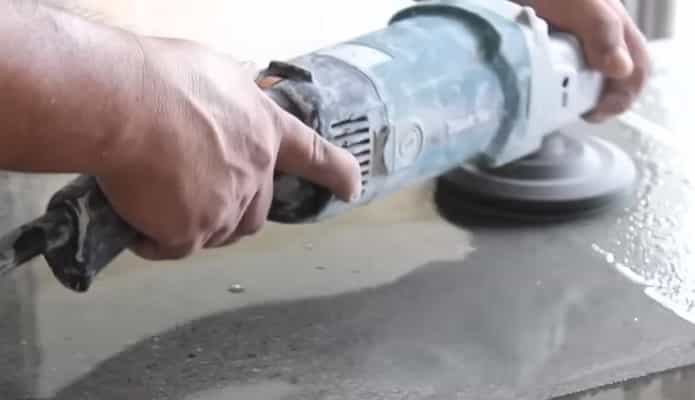
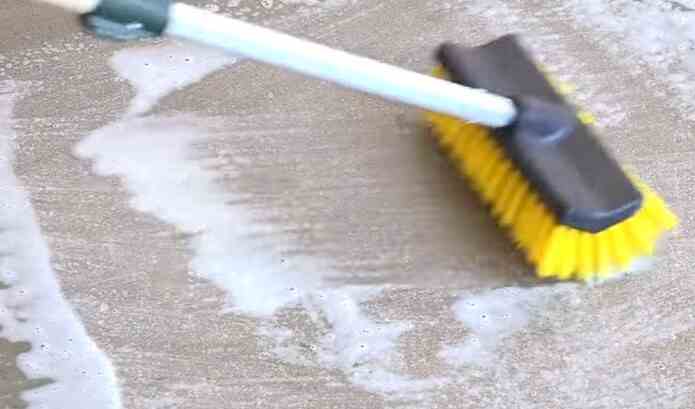
Etching concrete is a process of creating texture on the surface of the concrete. It can be done using various techniques, such as acid etching, sandblasting, or grinding.
Acid etching is an economical and straightforward method to create patterns in concrete. The process involves washing away the cement paste and exposing the aggregate particles beneath it with a mild, acid-based solution.
Sandblasting is a more aggressive technique that can quickly give the concrete an even texture and finish.
Grinding is the most commonly used method to achieve a desired pattern or finish on the concrete surface. The process involves using diamond-tipped tools to grind away at the surface of the concrete to create a desired shape or finish.
All of these methods create a unique pattern that can be used to enhance the beauty of the concrete structure. However, it is essential to note that etching concrete must be done correctly to achieve the desired result and prevent damaging concrete surfaces.
Check out the video on how etching concrete is done below:
Purpose and benefits of etching concrete
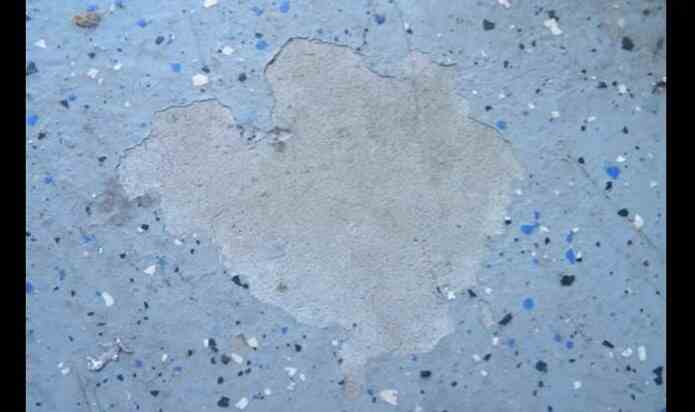
Etching concrete is a great way to add aesthetic appeal and function to your home or business. Here are five essential benefits of etching concrete:
1. Improved aesthetics
Etching concrete can give any dull or plain-looking surface the extra boost it needs to stand out. It is a relatively simple and affordable way to bring an old, worn-out concrete surface to life.
2. Increased durability
Etching concrete helps create a stronger bond between the surface and materials such as paint, sealers, or stains. This makes it more resistant to chips, cracks, and other damage caused by heavy foot traffic and extreme weather conditions.
3. Increased traction
Etching concrete creates a rougher surface which helps reduce the risk of slips and falls due to wet surfaces. This is especially important for areas likely to get wet frequently, such as pool decks, driveways, patios, or entryways.
4. Easier maintenance
The rough texture created by etching concrete makes it easier for dirt and debris to be removed from the surface with minimal effort. This helps keep your concrete surfaces looking cleaner for longer periods without having to use harsh chemicals or scrubbing tools.
5. Easier installation of sealers and stains
Etching concrete makes it easier for sealers and stains to penetrate the surface, which helps prevent them from peeling or bubbling after application. This ensures that your concrete surfaces will look great for years, with minimal maintenance required.
Overall, etching concrete is a great way to add aesthetic appeal and longevity to any area of your home or business. It is an affordable process that can be done quickly and easily.
Can you sand concrete instead of etching?
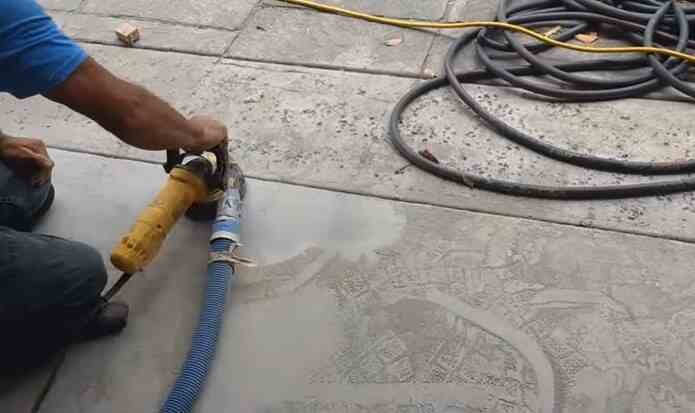
Yes, you can sand concrete instead of etching. Sanding is a less aggressive way to prepare the surface for painting, staining, or sealing and is typically used to create a smoother, more consistent finish. It should be done with caution as it can expose aggregate and weaken the concrete if taken too deep.
The best way to sand concrete is using a soft-bristled brush attachment for an angle grinder or sander, working in a circular motion. If a finer finish is required, you can use sandpaper of various grits to achieve the desired result.
How to sand concrete instead of etching?
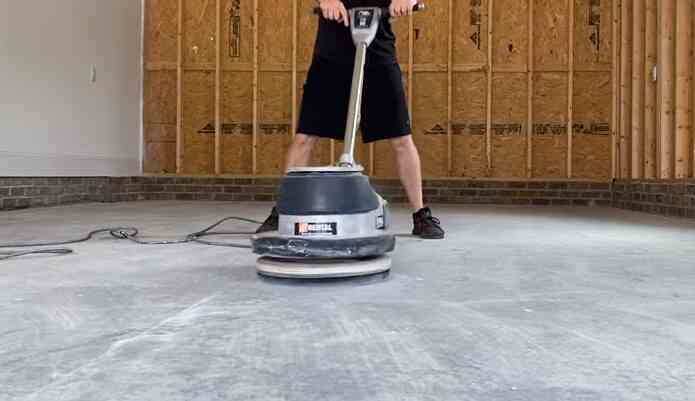
Sanding concrete is an excellent alternative to etching the surface. It is less labor-intensive and can provide a smoother, more even finish. To sand concrete properly, you will need some specialized tools and materials.
Step 1: Choose Your Sandpaper Grit
The first step is to choose the right sandpaper grit for your project. Coarse-grit sandpaper (ranging from 40-60) is ideal for removing old coatings and smoothing rough areas. Medium-grit (80-120) sandpaper works well for light abrasion and preparing surfaces before painting or staining. Fine-grit (150-220) sandpaper is great for smoothing and polishing.
Step 2: Prepare the Area
Once you have the sandpaper, prepare the area by covering nearby surfaces with drop cloths to protect them from dust.
Step 3: Start Sanding
Attach your sandpaper to a handheld sander or an orbital sander. Begin moving the sander across the concrete in long, even strokes. Work in sections and make sure to overlap each stroke by about one-third. If you have a large area of concrete to cover, use a belt sander or corner sander for faster results.
Step 4: Vacuum Up Dust & Debris
Once you've finished sanding, vacuum up the dust and debris with a shop vacuum or wet/dry vac. Make sure to clean out crevices and edges before moving on to the next step.
Step 5: Seal the Concrete
To protect your concrete from moisture and stains, seal it with a quality concrete sealer. Follow the directions on the container for the best results.
Sanding concrete is an easy and effective way to prepare surfaces for painting or staining, remove old coatings, and smooth rough areas. You can achieve a professional finish with proper supplies and preparation without having to etch the surface. Give it a try!
What are the pros and cons of sanding concrete instead of etching?
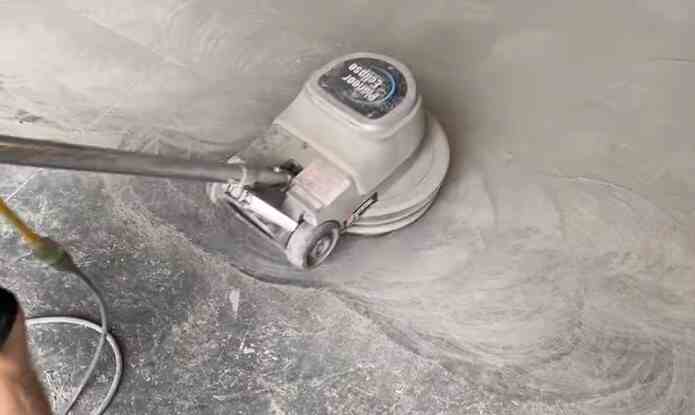
Sanding concrete is a great way to prepare the surface for primers, sealers, and other coatings. It can also be used as a decorative technique to create a smooth, polished finish. Here are five pros and three cons of sanding concrete instead of etching it:
Pros:
- Sanding concrete is faster and more efficient than etching because it requires less labor and fewer tools.
- Sanding is a great way to level out uneven surfaces and smooth bumps, making it easier to apply coatings evenly.
- Sanding provides a uniform look for concrete surfaces without creating hazardous dust or fumes.
- Sanding can remove any residual sealers still on the surface, which is vital for the proper adhesion of new coatings.
- The sanding process will not weaken the concrete or damage any existing sealers.
Cons:
- Sanding concrete can be time-consuming and labor-intensive, depending on the surface's size and the concrete's condition.
- The sanding process can create dust, which must be contained during the process to prevent inhalation.
- If the sanding process is not done correctly, it can create an uneven surface that is difficult to coat evenly.
Overall, sanding concrete is a great way to prepare the surface for coatings and create a smooth, polished finish. While there are some cons to consider, the pros of sanding generally outweigh them. With the right tools and techniques, you can get great results with minimal effort.
Comparison of etching concrete vs. sanding
Etching concrete and sanding are two different approaches for refinishing concrete surfaces. Here is a comparison of the two methods to help you decide which is right for your project.
1. Equipment:
Sanding requires sandpaper and a large, powerful sander. Etching requires acid and a small brush or broom for application.
2. Time:
Sanding takes more time than etching, as the sander must go over the surface multiple times to get the desired effect. Etching can be done in a much shorter time frame.
3. Cost:
Sanding requires the purchase of new sandpaper for every job and, therefore, can be more expensive than etching. Etching only requires acid, which is relatively inexpensive.
4. Result:
Sanding produces a very smooth finish, while etching leaves behind a rough texture that will better hold onto sealers and other coatings.
5. Safety:
With sanding, there is potential for injury from flying debris or breathing in dust particles; however, with etching, all that is needed are protective gloves and goggles to protect against acid splashes.
6. Clean-up:
Because sanding produces a lot of dust, it takes more time and effort to clean up after the job is done. With etching, the acid residue can easily be washed with water, and there is little to no mess left behind.
7. Surface:
Sanding is great for flat surfaces, while etching works best on uneven or textured surfaces.
8. Porosity:
Etching helps open up the concrete's pores so that coatings or stains can penetrate easier, whereas sanding does not have this same effect.
9. Visibility:
Sanding produces a better finish overall, as it leaves a few imperfections visible to the eye, whereas etching may leave some areas with slight discoloration.
10. Removal:
Sanding can remove dirt and grime from the concrete, but it will not remove any sealers or coatings, whereas etching can strip off these types of materials.
Both sanding and etching are great for refinishing concrete, but depending on your project needs, one may be better than the other. Consider each option carefully before making your decision. Doing so will ensure you end up with the best results possible.
8 Reasons to Consider Sanding Concrete Instead of Etching
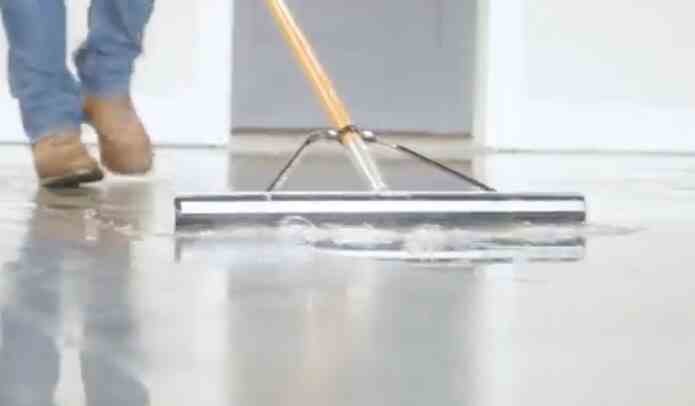
Concrete sanding is a more effective, cost-efficient way to prepare concrete for finishing and maintenance than etching. Here are eight reasons why sanding is the better option:
1. Avoid Damage to Substrates:
Sanding concrete is gentler than etching, making it an excellent choice for preparing substrates like antique or fragile concrete. Sanding does not cause any damage to the existing surfaces underneath and leaves a smooth, even finish that is ready for refinishing.
2. Reduce Labor Costs:
Sanding concrete is much quicker than etching, meaning you can get the job done faster and with fewer person-hours. This leads to lower costs in labor and materials while still delivering excellent results.
3. Better Profitability:
Since sanding doesn't require specialized tools or extensive labor, it translates to higher profitability on every job.
4. Longer Lasting Finish:
Sanded concrete floors are less likely to show wear and tear from heavy foot traffic or other use over time. This results in a longer-lasting finish, saving you the hassle of re-sand or re-etching the floor in the future.
5. Increased Safety:
Etching could create slippery surfaces if too much residue is left after application. Sanding eliminates this risk since it strips away all traces of dirt and grime while providing a rougher surface that increases traction and provides a safer environment for everyone.
6. Enhanced Surface Profile:
Sanding creates an enhanced surface profile that helps keep liquids from penetrating and is more resistant to staining. This means that your floors will stay looking clean and fresh for longer.
7. Color Consistency:
Sanding concrete helps ensure consistent coloring, making it easier to achieve single-tone dyes or stains throughout the project area.
8. No Corrosive Residue:
With sanding, there is no need to worry about corrosive residue being left behind after removing old coatings from the concrete surface. This makes it an ideal option for jobs requiring safety precautions due to hazardous fumes or chemicals.
Sanding concrete has many advantages over-etching when preparing a substrate for finishing and maintenance. From reduced labor costs and increased profitability to enhanced surface profile and no corrosive residue left behind, sanding is a cost-effective, efficient method that ensures the best possible results. Consider sanding concrete the next time you tackle a project and reap the benefits of this superior, long-lasting method.
Final Words
In summary, etching concrete is a process that involves using acid and scrubbing to remove surface impurities and prepare the surface for coating. Sanding concrete can be an alternative to etching, but there are pros and cons to consider.
It is important to weigh the pros and cons and consider the specific needs and conditions of your concrete surface before deciding whether to etch or sand.
Recommendations for those considering the option of sanding instead of etching include researching the appropriate grit sandpaper and technique to use and being prepared for the potential cost and effort required.